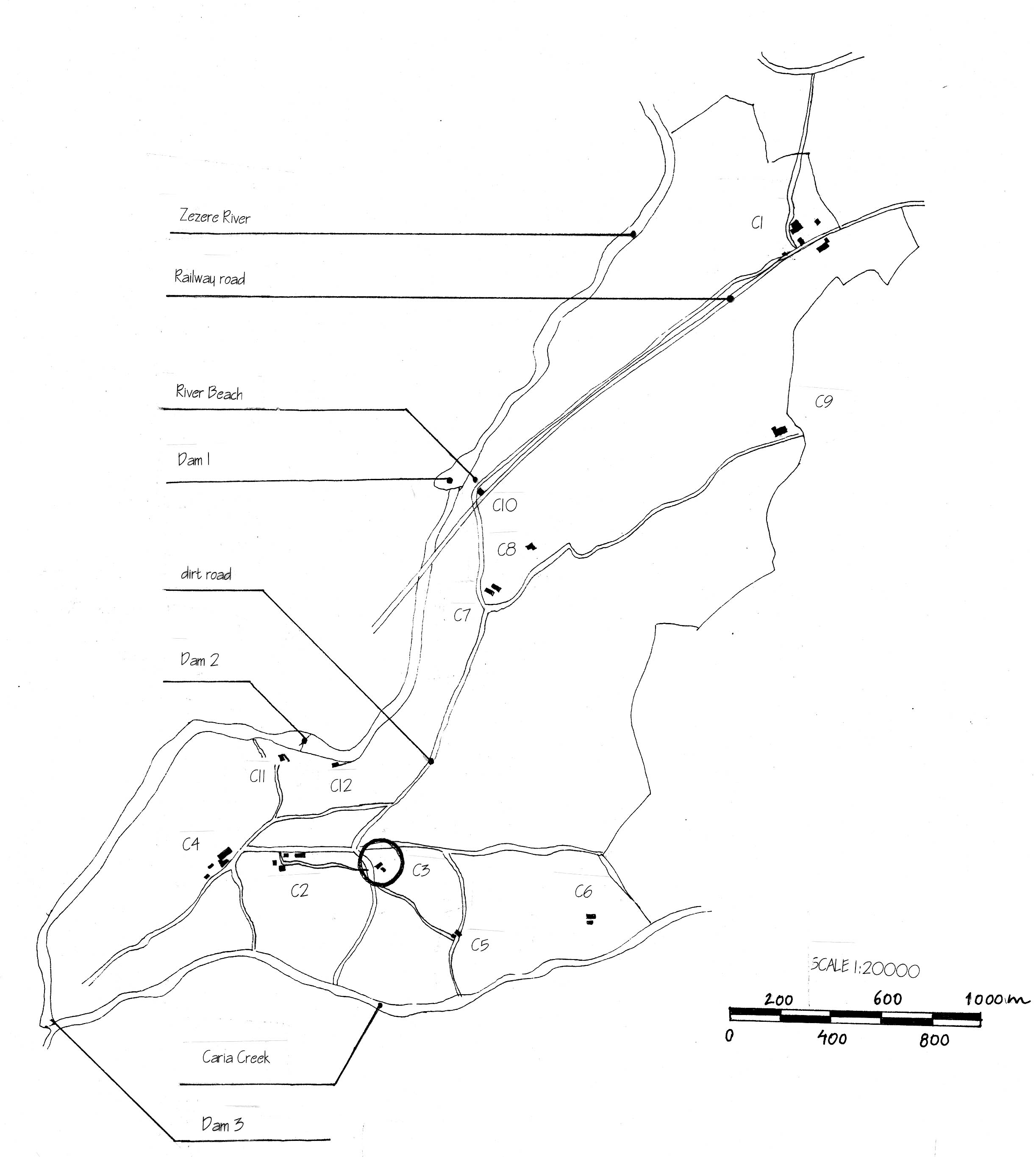Quinta da França
farm is located in the north center of Portugal and will be adapted for
sustainable tourism. It has 24 stone houses that represent the regional
vernacular architecture. These houses were originally designed in relationship
with the closest environment. One of those houses was chosen for a summer
camp facility.
Casa dos Eucaliptos
was studied in order to be restored and adapted for new tourist purposes
in a way the integration with the surrounding environment is respected
and the comfort is improved.
The first phase consisted of trying to improve the thermal comfort by:
- analysing the climate in
the region which concluded that solar gains should be increased in Winter
time and thermal mass used in summer time.
simulating the house in Calpas, which predicted a very high heating load and a moderate cooling one
applying the strategies to the improved case and simulate it in Calpas

Portugal and the central region

Quinta da França farm and Casa dos Eucaliptos




Thermal comfort in Casa
dos Eucaliptos
Psychrometric chart for Cova da Beiraclimate
A clerestory window is more efficient in summer and the sunspace in the winter. The clerestory window provides less heat but a very efficient cross ventilation while the sunspace improves solar gains significantly.
A radiant floor can complement
the heating supply together with the fireplaces. This system can be backed
up by solar panels.
In what concerns daylighting, the clerestory can provide enormous improvements although electric lighting will always be necessary in summer time, increasing the cooling load.
In Casa dos Eucaliptos, the
users have an important role to play. The thermal light and indoor air
quality depend on the operation of shutters, windows and lights. For example
exposing the thermal mass in summer and covering it in winter (eg. Carpets
or furniture) can provide even more comfort in extreme situations not predicted
in Calpas program.
Outdoor spaces were considered important to provide comfort in summer when summer camps occur. A cool tower and lightweight structure can provide both shade, humidity and air movement, in the food court space. The cool tower can also provide some cooling to indoor spaces if the dining room window close to the tower is open so that air flows also into the house.

Clerestory window facing south:
improving solar gains and cross ventilation

Sunspace facing south: improving solar gains

Clerestory window: improving
daylighting


Cool tower and lightweight
structure:
improving outdoor summer
comfort
The performance of Casa dos Eucaliptos will require some understanding from the users as how it actually works. This thesis also contains a manual to be provided to the users.